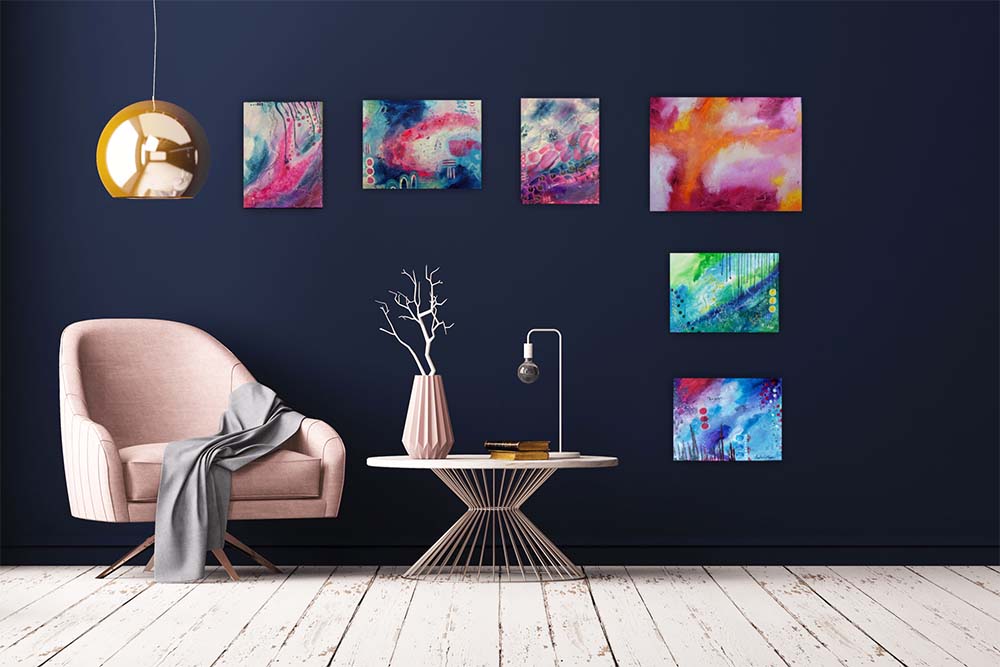How Color Can Promote Mental, Physical, and Spiritual Wellbeing
Overview
“Colors, like features, follow the changes of the emotions.” Pablo Picasso
The art of using colors to promote mental, physical, and spiritual wellbeing is called color therapy, also known as chromotherapy, light therapy, and colorology.
How does this work?
First, I’ll go over some fundamental facts, and then I’ll talk more about how colors affect us, our bodies, our minds, and our spirits.
Physics Fundamentals
As you read on, keep in mind that energy interacts with other energy.
Matter is Energy
In physics, we learned that all matter is energy. This includes us, as human beings, we are matter, and we are energy. Each part of us, our organs, our limbs, and our cells have their own energy vibration (frequency). The vibratory rate of a substance determines its density or its form as matter. A slowly vibrating substance is referred to as physical matter.
Color is Energy
According to the Britannica dictionary, color is defined as follows:
“Color: The aspect of any object that may be described in terms of hue, lightness, and saturation. In physics, color is associated specifically with electromagnetic radiation of a certain range of wavelengths visible to the human eye. Radiation of such wavelengths constitutes that portion of the electromagnetic spectrum known as the visible spectrum—i.e., light.” (Reference)
“An object appears colored because of the way it interacts with light.”
Each color has its own frequency vibration, also called light vibrations.
Light is Energy
“Light is therefore color.” - J. M. W. Turner
Electromagnetic radiation is “light that travels by oscillating in waves at a constant speed carrying energy.”
Also according to Britannica, Light is defined as follows:
“Light: In its simplest form, quantum theory describes light as consisting of discrete packets of energy, called photons “ (Reference)
Light is energy, and the phenomenon of color is a product of the interaction of energy and matter.
Everything is Energy
So you see, everything comes back to energy. As beings made up of energy, when we view color, which is also energy, the energy of the colors interacts with the energy of our beings, thus affecting us (our body, mind, and spirit).
Color Studies
In studies, colors have been shown to change brain waves. When color is viewed, the brain releases a hormone affecting our emotions, mind clarity, and energy levels. (Reference)
According to one study, “The emotion ratings showed that saturated and bright colors were associated with higher arousal.” “Saturated and bright colors caused significantly stronger skin conductance responses. The results confirm that color stimuli have effects on the emotional state of the observer. These effects are not only determined by the hue of a color, as is often assumed, but by all the three color dimensions as well as their interactions.” The three color dimensions are hue, saturation, and brightness. (Reference)
According to an abstract on NIH.gov, “Chromotherapy is a method of treatment that uses the visible spectrum (colors) of electromagnetic radiation to cure diseases.” “Sufficient published material can be found about the subject that provides a complete system of treatment focused on the treatment methodologies and healing characteristics of colors. A number of studies have elaborated the relationship between the human body and colors. “ (Reference)
The paper also states, “He (Ott) further explained that there are different methods of applying colored light. It can be received through the skin or the eyes, which, in turn, has been found to stimulate the internal glands.”
I won’t go into any more detail about color therapy as a science, since that topic can go very deep. You can click on any reference within the article to read more on each topic.
Color Meanings
“Color! What a deep and mysterious language, the language of dreams.” - Paul Gauguin
There isn’t any one-size-fits-all answer when it comes to defining colors or deciding which colors are best for you and your home. Colors and the emotions they evoke vary by culture, ie. purple can represent our crown chakra and highest intuition to some people, it represents royalty to some, and in the Philippines, purple can represent sorrow and mourning. Colors also can have different meanings depending on the situation, ie. red could represent love, lust, and positive physical energy in one context, or anger and heat in another context, and if you’re driving, red represents “Stop!”
With that being said, here’s a quick cheat sheet of what some of the meanings of various colors can be. This list is just a sampling, as colors can have many more meanings and elicit different emotions. Feel free to download and print this "Psychology of Color" cheat sheet for your personal use.
Using Color In Your Home Decor
Colors affect our brains, so Insight Homes recommends keeping this in mind when selecting your home decor. (Reference: https://www.insighthomes.com/consider-how-color-affects-your-brain-when-decorating/)
According to Neurofield.com, “Our brain is wired to pay attention to objects that are of a contrasting color compared to its surroundings.”
This is why if you have a wall that is painted a neutral color such as white, light gray or beige, adding a pop of color to the wall, such as a vibrant colorful painting, will draw the eye to that object. The same principle works if you have a dark wall, and you add a piece of artwork that is light or has vibrant colors.
Shop colorful artwork here.




